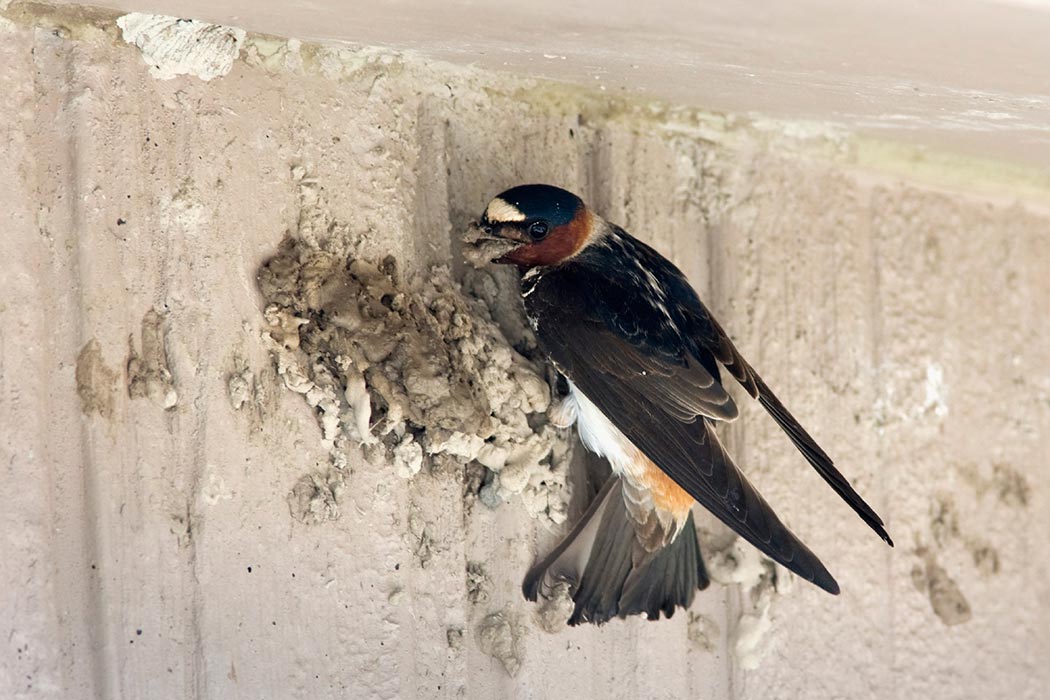Charles R. Brown and Mary Bomberger Brown have been studying the cliff swallow (Petrochelidon pyrrhonota) in southwestern Nebraska since the early 1980s. They’ve written dozens of papers and one well-received book about the species. Such long-term, in-depth research about animals often reveal more than the scientists ever bargained for. The Browns and their graduate students have been privileged to watch a species evolve in their lifetimes, something Charles Darwin would have given his eye-teeth for.
The ornithologists were initially curious about the reasons for colonial nesting. What are the costs and benefits of group living? (After all, most song birds are not social.) What are the effects of ectoparasites and extra-pair bonding, two perhaps inevitable consequences of crowding together?
Traditionally, cliff swallows, as their name suggests, built their gourd-shaped mud nests in clusters under overhanging cliffs and bluffs. As bridges and buildings started to expand across the county in the 19th century, the swallows adapted to the possibilities presented by humans and built on these new structures. Additionally, the spread of agriculture meant the spread of insects, meaning more food for the swallows.
But the birds really took off in the second half of the 20th century, when the interstate highway program stretched across the nation. Concrete bridges actually make better places to nest than cliffs, which are always in danger of eroding and being washed out in storms. The birds expanded with the highways. They are now found nationwide, especially in the middle of the country. It’s one of the few species that has been able to expand its range thanks to humans. But clustering around highways hunting for flying insects can be extremely hazardous. Speeding cars and trucks take their toll. The birds have adapted to this new threat with generations with shorter wings, which makes them even more acrobatic in flight, better able to dodge and weave among semis and SUVs.
The Browns realized what they were seeing after a very late winter storm in May, 1996. After five days without food, more than half of their study population was dead. The birds that survived this unusual weather had larger bodies and shorter wings. In a very real sense, humans are driving these birds’ adaptation to their environment.
It was once thought that none of us would ever actually see evolution in process because it took so long. Numerous cases have since put that notion to rest. But few of these cases are so readily visible as that of the cliff swallow, right outside our car windows.







